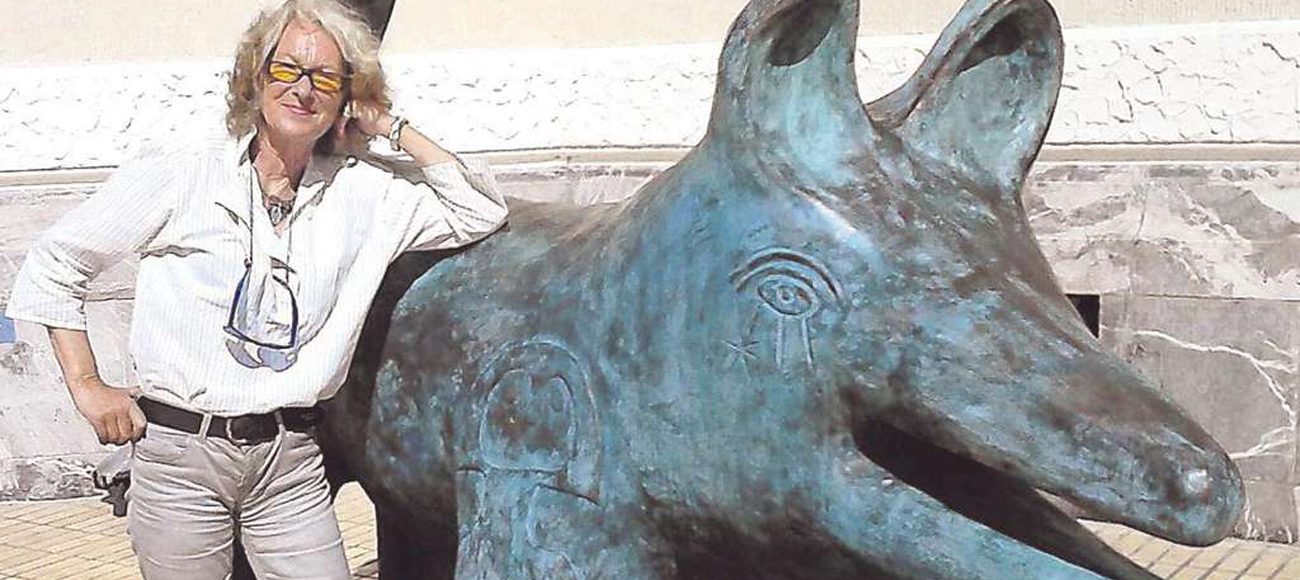»Das Nicht-Können. Alles auf eine Karte setzen. Das Spiel mit vollem Risiko. Das Nicht-Angekommen-Sein, das In Between, die Suche: zur Bronze erstarrt, präsentiert sie sich kostbar und human. Sie fängt das Jeweilige auf mit großem Zeitversprechen: das Provisorische und Endliche wird ein Ewiges. Das Unterwegs-Sein als Zustand, in dem es sich Einrichten lässt, immer wieder neu durch die Kunst«.
Carin Grudda was born 1953 in Gudensberg near Kassel, West-Germany. The international art exhibition “documenta” in Kassel accompanied her school education up to the “Abitur” (4 A-level equivalent) in 1972. She subsequently studied history of art and philosophy in Gießen, West-Germany and completed her studies with a thesis on Dadaism and its philosophical contexts.
A visit at the Villa Massimo in Rome (1980) and a work practice with the ARD (one of the two nationwide public TV stations in Germany) in Madrid (1982) almost naturally conclude into an artistic work practice. Until the start of the nineties, Grudda lived and worked freelance as an artist in Frankfurt, West-Germany. Her subjects being “play” and its playful structures, the “just fallen into place” and coincidence, her work is based on “traces” and “tracing/ feeling” (German: “Spur” and “spüren”).
A scholarship for Miami in 1991 (South Florida Art Centre + “Zero-Art”) leads her towards larger formatted “group-paintings”, images which consist of autonomous parts in various sizes merging into one.
Grudda leaves Frankfurt in 1993 and moves to Ingelheim at the river Rhein. The “Blaubilder” (= “blue pictures”) are created here. These are a cycle of large format paintings which she now – as a countermove – cuts into pieces of various sizes.
During a scholarship for printmaking sponsored by the country of Saxony in Leipzig, East-Germany (Rössler workshops) in 1992, Grudda is introduced to the etching technique which she adapts and develops in her own terms and continues to this day. Based on the traces of her workspace, her predominant subject is “being on the road” as a condition of the self within time. Her etchings finally grow into large formatted picture volumes and from these into installations.
In the late nineties her painting grounds also change. She now paints on wooden surfaces of all kind, objets trouves (found objects) with manifold possible former functions, which she changes into assemblages by adding various objects.
An art prize in Italy introduced her to the foundry Caporrella in Rome in 1998. Numerous bronze sculptures saw the light of day in the subsequent years, ranging from the naturalistic casts of small snails to the creation of the monumental BLAU MIAU.
Grudda’s intensive work with bronze sculptures in Italy causes her to move permanently to Liguria at the start of 2001, where she now lives. She learned all the relevant techniques of bronze casting first in Tuscany and then in Rome. She meets renowned artists such as Daniel Spoerri, Luciano Castelli, Nunzio, Arman and Tommaso Castella.
With an invitation to exhibit at the 54th Venice Biennale in 2011 Carin Grudda’s work gains further critical acclaim and international recognition.
